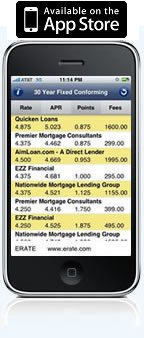Understanding Credit Cards: Choosing a Card
by Amy Lillard
Credit and credit cards are an integral part of our economic system today. But there is a lot of misinformation and misunderstandings about credit. In this continuing series, we examine key concepts, tips and best practices when it comes to credit cards.
(10/31/2012) Consumers have more options than ever before when it comes to credit cards. Whether it's general credit cards from a major lender, retailer credit cards, or rewards cards from gas companies or airlines, the choices can be a bit overwhelming.
How do you choose from the vast array of options?
The most important thing to consider first is how you will use the card. If you plan on paying off the balance each month, your primary focus should be low or no fees and long grace periods. If, however, you plan on carrying a balance, your interest rate will be of primary importance. And if you plan on using the card frequently, you should also consider credit limit and rewards.
Let's take a look at these key considerations.
• Fees. Some cards charge annual fees simply for having the card. Most cards have other fees for balance transfers or cash advances, or for any number of other transactions. And of course there are fees for late payments. Look closely at the fee structure to understand what you'll be charged for using that card.
• Grace periods. This is the amount of time you have to pay your balance before incurring finance charges. If you plan to pay off your balance each month and thereby avoid interest, examine the card's grace period.
• Interest rate. The Annual Percentage Rate is either fixed or variable, depending on the prime rate. If you're looking for a low rate, compare cards to each other for an accurate feel of the best rates. Also understand how a card calculates their finance charge on any balances, which determines how much interest and total you will pay. And don't forget — companies can change rates. Pay attention to notifications and statements to make sure you don't miss a rate hike.
• Credit limit. Credit card companies will extend only a certain amount of credit to you, which could be hundreds or thousands of dollars depending on your credit history. Consider the items you'll be looking to purchase, and the optimal limits needed.
• Rewards. Using cards that build up cash or other rewards can put boost your purchasing power. Using a card with free rewards is the way to go. Beware of spending simply to build up benefits — incurring debt to save a few dollars on travel or gas may not be worth it.
For Additional Reading:
Federal Reserve Guide to Credit Cards: http://www.federalreserve.gov/creditcard/
Best Credit Cards for You: http://www.getrichslowly.org/blog/2008/09/09/credit-card-basics-how-to-choose-a-credit-card/
What to Consider When Choosing a Credit Card: http://www.investorguide.com/igu-article-91-credit-cards-what-to-consider-when-choosing-a-credit-card.html
Other related articles:
Understanding Credit Cards: Do's and Don'ts
Understanding Credit Cards: Managing Interest
Understanding Credit Cards: How to Qualify for Credit Cards
Understanding Credit Cards: Types of Credit Accounts
Understanding Credit Cards: Building Credit for Newbies
Fannie Mae & Jumbo Mortgage Rates
Just One Click! = Current Rate Chart

Start by selecting your state

Amy Lillard
The ERATE® Resource Guide to No-Closing-Cost Refinancing
Principal Reduction: New Programs, More Controversy
Understanding Mortgages: Mortgage Paperwork
Understanding Mortgages: Types of Mortgages
Understanding Mortgages: How to Get a Mortgage
Understanding Mortgages: Buy or Rent?
Understanding Mortgages: Working with a Real Estate Agent
Understanding Mortgages: Working with a Real Estate Agent
Refinancing: Selecting a Loan

- Mortgage Program Options
- Interest Only Mortgage
- 100% Mortgage Financing - No Down Payment
- Mortgage Rates Comparison
- Search for Mortgage Rates
- No Costs Mortgage Refinancing
- 2% Rule - Refinancing Mortgage
- Yield Spread Premium
- Prepayment Penalty - Mortgage Refinancing
- What is APR and how is it calculated?
- Private Mortgage Insurance - Refinancing
Moving Ahead With Your Refinance
Get the Updated and Improved Mortgage Rates App from ERATE.com
FREE Mortgage Rate WidgetsYour State's Rates or National Rates Get this Widget for any State you want


